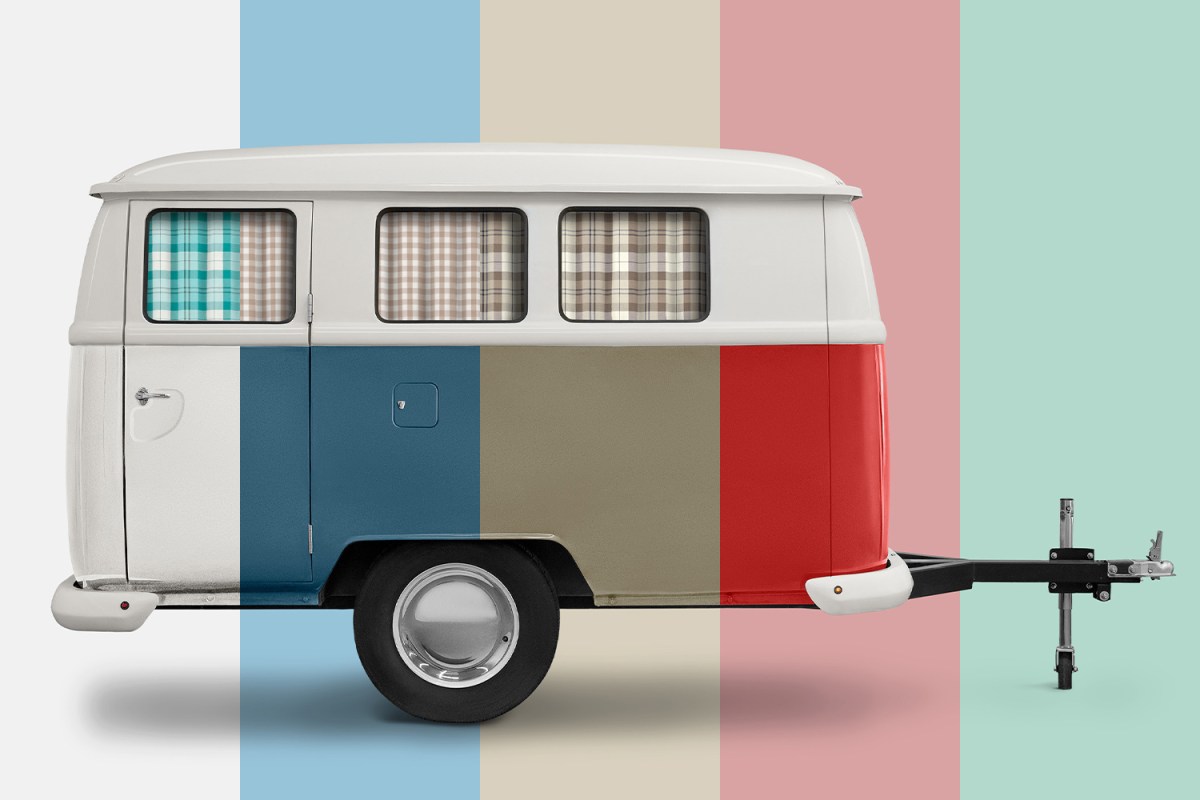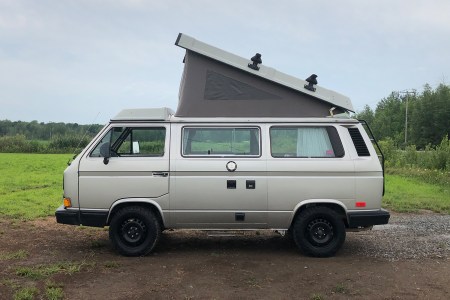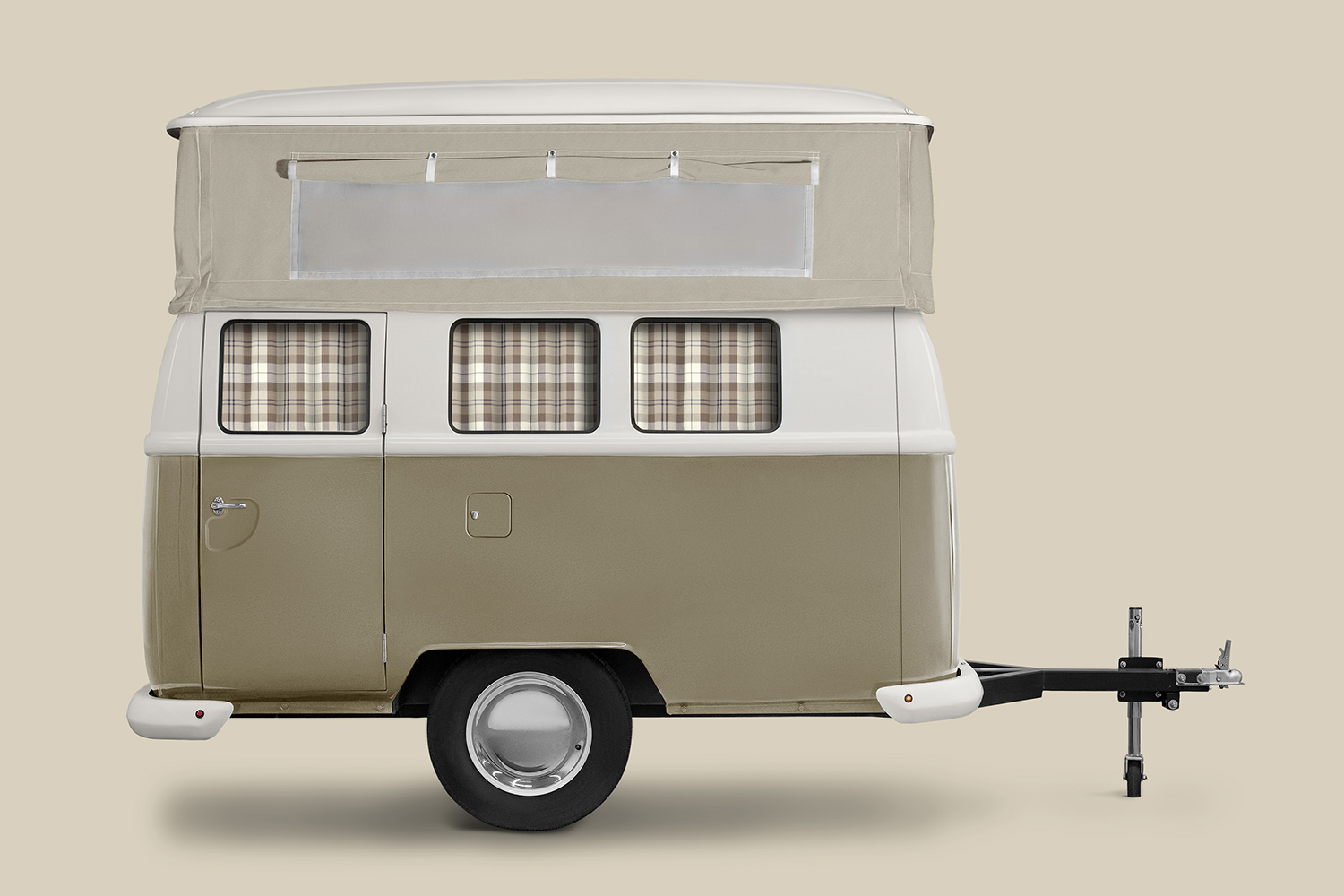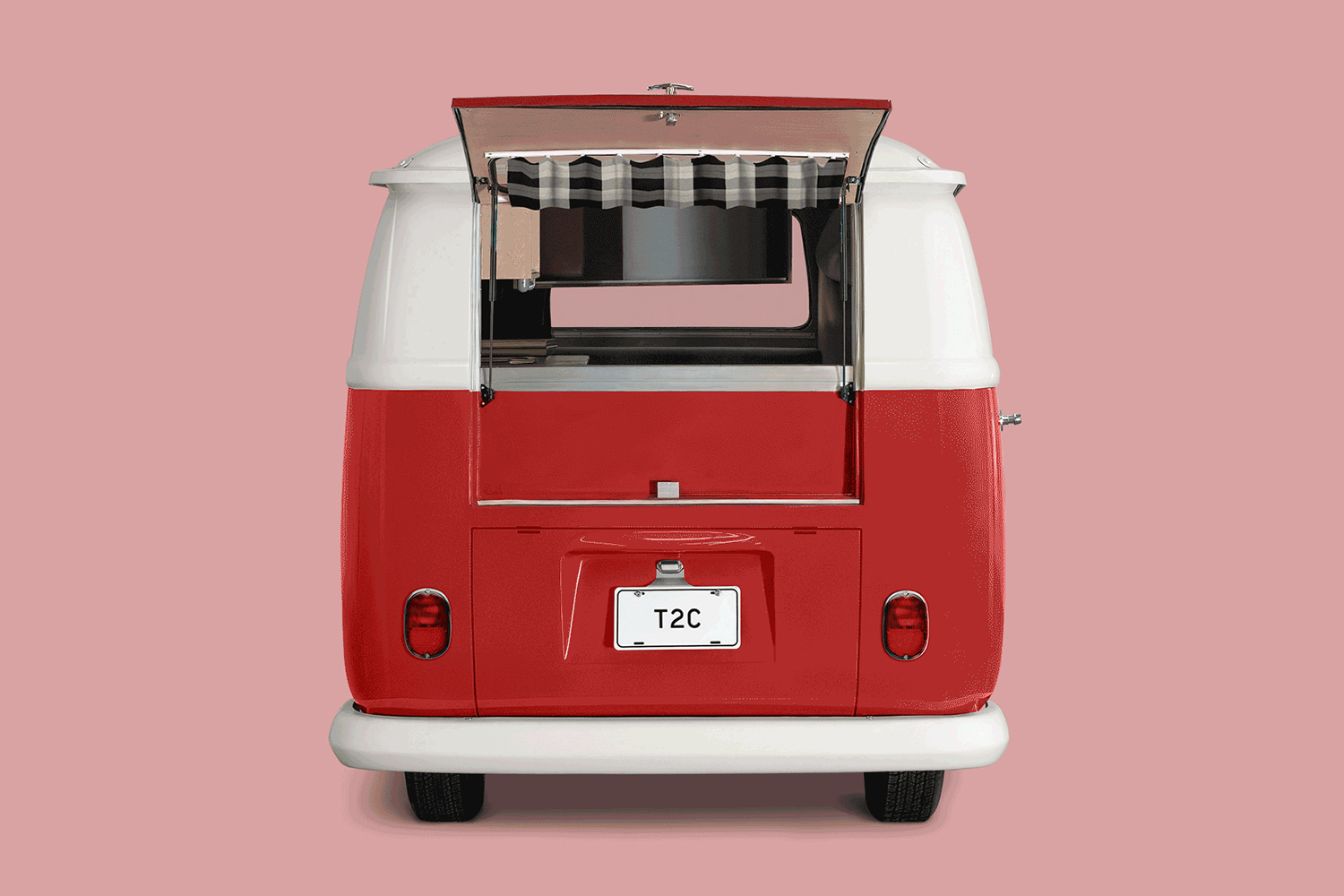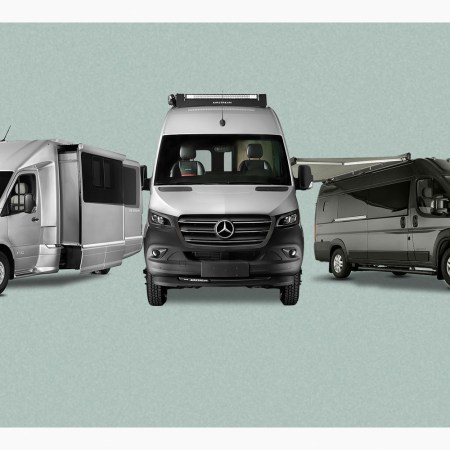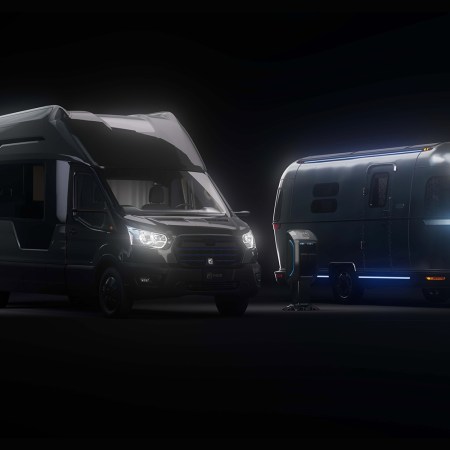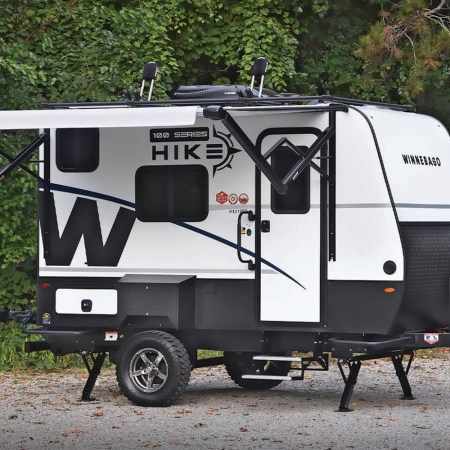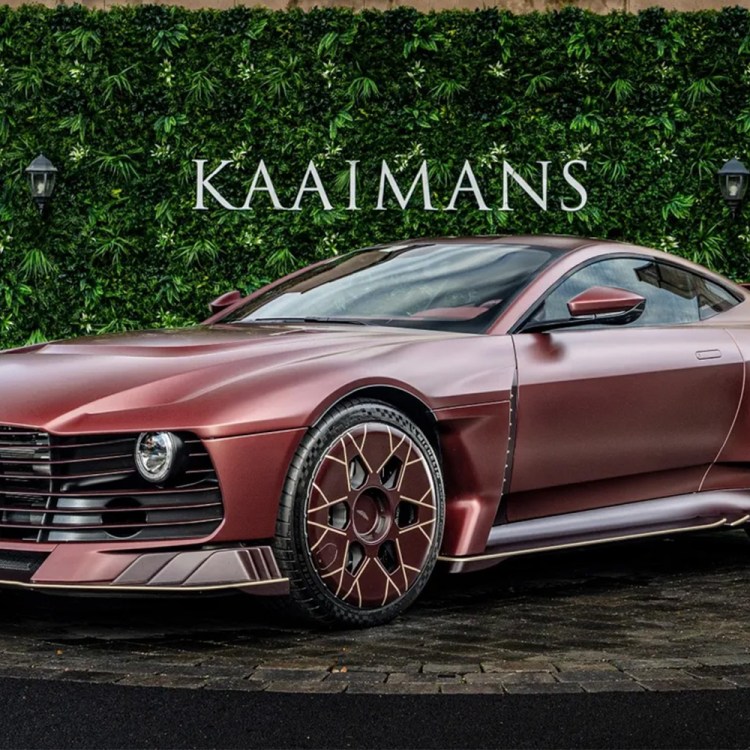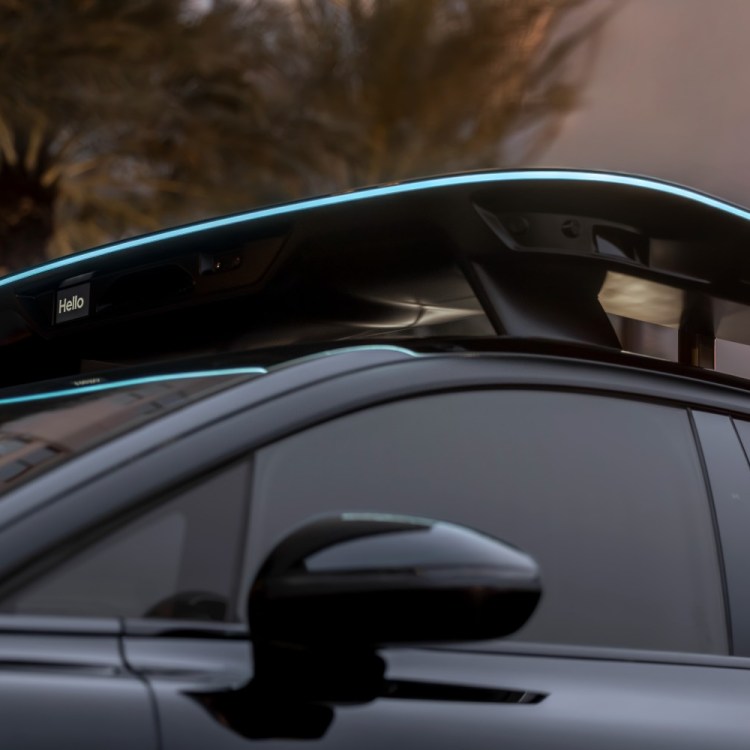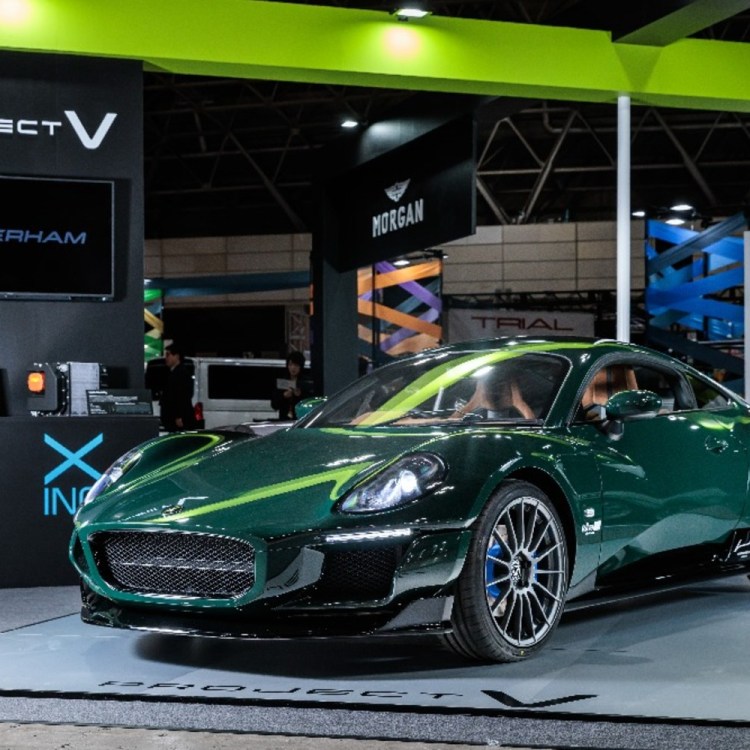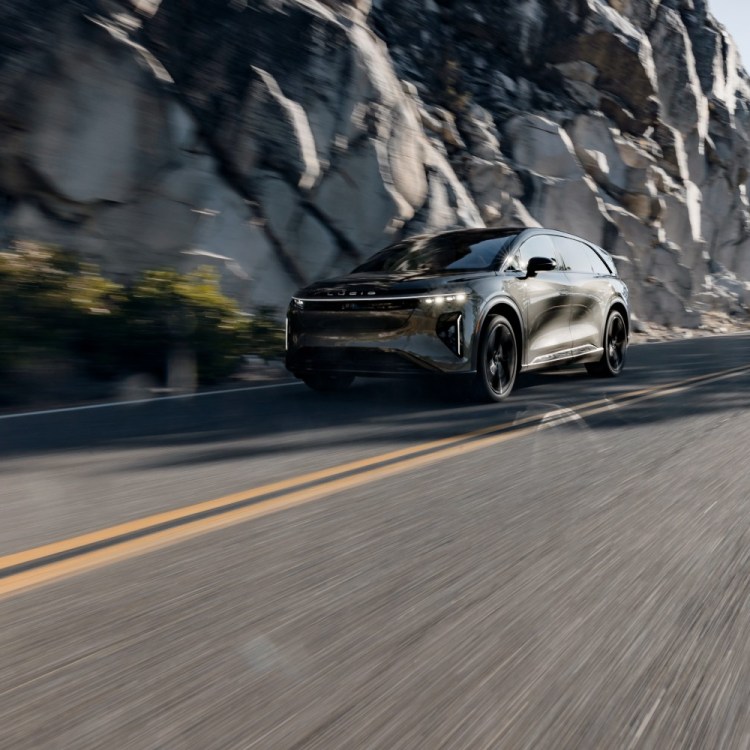Ryan Schassen has a problem. “I’m fully addicted,” he admitted during a video call from his home in Minnesota, “to the point where people are starting to get worried.”
It all started when his son turned 16 and said he wanted a Bug — a Volkswagen Beetle. “At the time, I was building custom motorcycles during the whole Jesse James period,” Schassen, a mechanical designer, told InsideHook. “Within 18 months, I didn’t have a single motorcycle part in my garage. I just jumped into the deep end of the pool. Now, with the company rig we just purchased, I think I’m at eight Volkswagens from 1960 to 1985. All mine are ‘60 to ‘69 except an ‘85 Vanagon.”
The company he’s now channeling this VW addiction into is Type 2 Campers, a new RV builder based in Woodburn, Oregon, that is hoping to counter the increasingly expensive, increasingly elaborate travel trailers on the market today with a simple, lightweight, affordable and timeless design. Their first offering, the T2.3, which began taking orders on February 15, is modeled after the original Volkswagen bus, which was introduced in the late 1940s as the Type 2.
What I Wish I Knew Before I Bought a 1990 Volkswagen Vanagon Westfalia
It’s not all #vanlife dreams and road trips with this classic camper van, but it’s fun for the right driverWhile Type 2 Campers is a new concern, it’s an offshoot of a company that Heather Gardella started 12 years ago called Dub Box USA, which makes fiberglass versions of these VW-lookalike trailers. (Though neither of her companies are affiliated with Volkswagen.) Gardella came across images of a U.K. company building them, then made a pit stop to check them out while on a European business trip.
“I asked what the situation was and if I could buy a body, because I was going to make my own camper,” she said. “I got it over here and I realized I wanted to make a lot more of them. I thought I would just do a couple campers and have fun. Unfortunately, that’s not really my personality, to dabble in something.”
She got the rights to set up a U.S. outpost of Dub Box and began building and selling these retro-styled campers, which quickly gained popularity not just because of the old-school Volkswagen aesthetic, but because you didn’t need a Ford F-350 to pull one around and a barn to store it in. “There was a guy, I think he was from Colorado, in like a Toyota Tercel,” Schassen recounted. “He had bought a matching colored [Dinky Dub, the name for one of the old camper models], and was going to pull it over the Rockies in his little four-banger.” Just last month, The Wall Street Journal published a story about former NFL kicker Steve Christie’s Dub Box camper, nicknamed the “Green Machine,” which he tows around the country to Dead & Company and Allman Brothers concerts with his wife.
Demand was there for the original fiberglass version of the Dub Box, but production levels were not. Gardella was simultaneously selling them as food and retail trailers — to companies like Google, Lucasfilm and Disney — but her fiberglass supplier couldn’t keep pace with both parts of the business. Despite having a long list of orders, the company was only able to produce about three a month.
“When Ryan started to work for us as the mechanical designer and engineer, he walked in and I had a whole dry-erase board of orders that just sat and stared at me and stressed me out because I was like, I can’t get bodies,” she said.
“I always had this dream that I wanted to make the campers as aesthetically pleasing as an Airstream and as popular as an Airstream.”
Heather Gardella, president and co-owner of Type 2 Campers
After starting as a CAD designer for Dub Box, Schassen returned to work with Gardella on a solution to what they both knew was a winning RV formula. (Dub Box still exists, but exclusively focuses on mobile business trailers.) Now with Type 2 Campers, the two co-owners are ditching the fiberglass and going with something that will up their VW cred even more.
“Basically, we’re taking authentic Volkswagen replacement [steel] panels that are made to be assembled in a certain pattern, and we’re creating our own process and end result with the same pieces,” Schassen said, steel being a much easier material to work with on this scale, and true to the automotive inspiration.
“A lot of people don’t want to get their hands greasy and buy the tools to keep an old Volkswagen running, but they want that experience and they want that feeling,” he added. “We’ve built a product that can do that.”
While the T2.3 Camper — the “.3” a reference to the three windows on each side of the trailer — hasn’t started production yet, it will be produced in Salem, Oregon starting April 1. When asked whether production numbers will depend on how many preorders are placed, Gardella responded emphatically, “We are going full-tilt, with or without orders. One thing I learned in the last decade is that buying a camper, you’ve got to capture it while they’re hot. We want a volume of inventory that we can pluck from that fits the personalization that someone would want.” Their goal is to produce 100 campers in 2024, and eventually get production ramped up to 20 a month.
At the time of launch, the single-axle T2.3 is available in one size with five colors and three different floor plans, with base prices starting at $29,950 (for the entry-level Sleeper, which features a U-shaped seating area that can be converted into a six-foot bed) and going up to $39,000 (for the Kitchenette, which adds amenities like an induction cooktop, sink, faucet, hot water heater and outdoor shower). The standard hitch design and fun-size dimensions are manageable for even the greenest RV buyers, with a length under 10 feet, width of five feet and weight under 1,000 pounds. If it seems a little small for you, these models do have a pop-top, so once that’s extended, the interior height goes up to six feet, four inches.
“[Volkswagen is] called ‘the people’s car,’” Schassen said. “We’re trying to build something that everybody can use and experience, all the way from an EV to a truck.”
While Gardella does have fond memories of driving around in Volkswagen Rabbits in high school (“no air conditioner with leather interior, dying in the summer, but loving every minute of it”), she’s not quite as obsessed with old VWs as her business partner. Instead of being inspired by that company’s original tagline, she has another vaunted brand on her mind.
“I always had this dream that I wanted to make the campers as aesthetically pleasing as an Airstream and as popular as an Airstream,” she said.
She got the first part down with Dub Box. Now, with the increased production capabilities at her disposal for Type 2 Campers, it’s time to see if her lightweight retromobile can compete with the RV heavyweights.
This article appeared in an InsideHook newsletter. Sign up for free to get more on travel, wellness, style, drinking, and culture.
